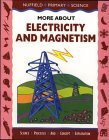A circuit needs to be a continuous path for the electric current to flow around. A power cell provides the power source. A cell has two ends (poles); a negative (-ve) and a positive (+ve).Current flows from the -ve pole to the +ve pole. Try swapping the power cell around to see the difference.
A switch can be included to provide a means of turning the power off by interrupting the circuit.
Advanced)- How fast does the current flow?
If we consider a circuit with a 100 watt light bulb operating at 240 volts then, using the equation Current (I) = Power (P) / Voltage (V) we get the current equal to 0.42 amps.
If we use a 18's gauge wire the diameter will be 0.102362 mm (0.00403") and the radius will be 0.05118 mm (0.00202"). For the sake of simplicity we will assume a radius of 0.05mm.
A cubic centimetre of copper contains about 8.5 x 1022 atoms, each providing a single mobile electron to carry the charge.
The charge of a single electron is 1.6 x 10-19coulombs
The velocity of the charge is calculated using the equation: V=I/nqA
Where
- V = Velocity (drift) of the charge
- I = current
- n = Number of charge carriers per unit volume
- q = charge
- A = cross sectional area of the conductor (π.r2)
Therefore V = 0.42 / (8.5 x 1022 x 1.6 x 10-19 x (3.14159 x 0.052))
= 3.93 x 10-3 cm/sec
= 0.014 m/hr --- Very Slow!
The speed increases as current increases and decreases as the radius goes up.
or
Speed is proportional to the current and inversely proportional to the radius.
Note - This applies for Direct Current (DC). For Alternating Current (AC) the speed would effectively be 0 m/s as the direction is constantly reversing.
All content Copyright © Virneth Studios 2005-2011, All Rights Reserved

